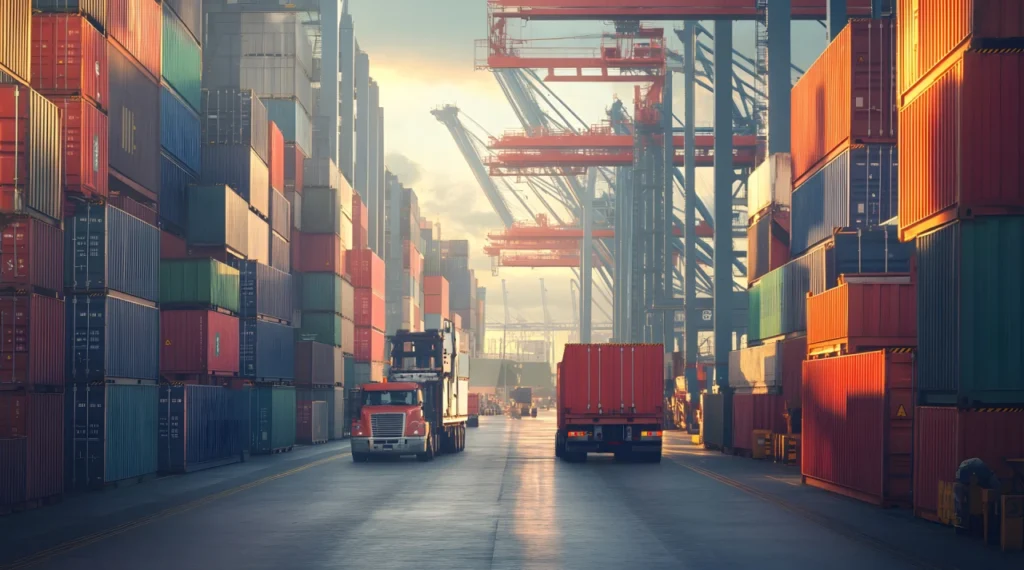10 Signs of a Healthy Supply Chain
- Introduction
- End-To-End Visibility
- Financial Stability
- Efficient Supplier Onboarding
- Diversified & Reliable Supplier Network
- Minimal Manual Process
- Balanced Inventory Levels
- Fast & Reliable Fulfillment
- Sustainable & Ethical Sourcing
- Omnichannel Readiness
- Strong Tech Backbone
- Want to achieve all 10 signs of a healthy supply chain?

10 Checkpoints that Demonstrate a Healthy, Future-Ready Supply Chain!
Is your supply chain fit, healthy, and future-ready? Or is it on the edge of disruptions?
An uninterrupted and resilient supply chain is the backbone of companies in today’s business and political environment. For a smooth operation during unexpected surges in demand or geopolitical instability, every enterprise must ensure that their supply chain is healthy and future ready.
At Syren, we love lists! So, we created one to help you do a quick health check for your supply chain. We identified 10 signs you can check to know if your supply chain will thrive or face difficulties during disruptions.
10 Signs of a Healthy Supply Chain
End-To-End Visibility
Running a supply chain without end-to-end visibility is like going through a maze blindfolded. It is important to know where your products and materials are at every stage of the supply chain. Companies need to see when and where there is a disruption or increased demand and how it is going to affect the whole supply chain. This not only enables them to be more responsive but also their supply chain is more agile and resilient.
Here’s a reality check, even in 2025, 43% of the organizations lack visibility beyond their Tier 1 suppliers! Never has it been more important to have end-to-end control towers and other software and platforms to maintain a healthy supply chain.
Financial Stability
A “built to last” supply chain is a combination of finance and logistics stability. Any stress tests should reveal that your supply chain can handle disruptions without breaking your bank.
The key factors contributing to financial stability are supplier reliability, diversified supplier networks, resilience against disruptions, safety stocks, demand planning, product harmonization, and risk management.
Disruption in any of these can lead to significant financial instability. Therefore, to prevent supply chain volatility companies must implement robust financial risk management strategies.
Efficient Supplier Onboarding
Supplier onboarding has several critical aspects to be considered such as legitimacy, financial stability and compliance. To efficiently onboard a new supplier, having a robust onboarding process is important to identify any drawback in the supplier to eliminate possible disruptions afterwards.
A healthy supply chain can efficiently integrate new suppliers without disrupting any process or compromising risk assessment. Your supply chain must demonstrate both security and speed.
Diversified & Reliable Supplier Network
Relying on a single or limited number of suppliers is a recipe for disaster. Diversifying your supplier network ensures quality and reliability even when disruptions occur. A diversified supplier network ensures no or minimal complexities against unexpected scenarios like natural disasters, political disturbances, and regional regulations.
Owing to the current political climate, according to US Chamber of Commerce, over 90% of the organizations in the US, are planning to or already diversifying their supplier network. To mitigate risk and enhance your supply chain stability make a habit out of reaching out to new suppliers and cultivating healthy relationships with them.
Minimal Manual Process
Supply chain automation is incorporating AI, machine learning, and digital processes into the supply chain to reduce manual errors and achieve maximum accuracy. Embracing automation is the key to streamlining operations and achieving smooth execution. Manual processes are time taking and a breeding ground for errors. Not just that, manual process takes a toll on efficiency and decrease the overall productivity as well.
According to the Economist Impact Survey 2024, 57% of the businesses in the supply chain are already looking to invest in AI to automate their supply chain and procurement operations and 44% are already planning to deploy advanced automation technologies.
Balanced Inventory Levels
Overstocking or understocking is a common disruption that supply chains face leading to loss of sales, customer distrust, increased warehouse waste, etc. Finding the right balance between too much and too little inventory is critical for resilience against supply chain disruptions.
Implementing robust inventory management strategies that focus on demand forecasting, lead times, and potential disruption is a key step towards a healthy supply chain.
According to the Economist Impact Survey 2024, 39% of the businesses in the supply chain have already deployed predictive analytics control towers to forecast disruptions and 42% have deployed real-time tracking and monitoring demand planning technologies.
Fast & Reliable Fulfillment
Organizations with healthy supply chains make sure their delivery is fast and reliable, driving customer satisfaction as well as showcasing efficient logistics that meet demand without delays.
Companies with disrupted fulfillment strategies risk loss of sales, customer dissatisfaction, and damage to brand reputation. The key to fast and reliable fulfillment is efficient warehousing, streamlined logistics, real-time inventory management, and supplier diversification. In addition to supply chain control towers, AI-driven delivery commitment tools help ensure accurate, on-time fulfillment, minimizing disruptions and enhancing reliability.
Sustainable & Ethical Sourcing
Collective consumer consciousness has experienced a shift in the past two decades. With increased awareness, customers today want products that are eco-friendly, ethically sourced, and produced under fair labor conditions.
A sustainable supply chain should have effective route and logistics management strategies that reduce overall emission of the company. A healthy supply chain must also implement sustainable sourcing initiatives that aligns with environmental and ethical best practices.
Integrating sustainability trackers helps businesses do just that, track inefficiencies and also their carbon footprint.
Omnichannel Readiness
Having a supply chain that is optimized to handle the complexities of omnichannel operations such as inventory management, fulfillment, operations, decision making and logistics and adapt to support e-commerce, retail and direct-to-consumer channels without any disruptions is a big sign of a healthy supply chain.
This can be achieved by integrating online and offline channels into a unified platform to provide a unified view of the inventory, data and fulfillment processes. Also, implementing AI and automation technologies for predictive analysis and demand planning can build a healthier and resilient supply chain.
Strong Tech Backbone
From decision making to real-time insights, AI and machine learning are revolutionizing supply chain management. AI has evolved far beyond just reducing manual effort. In supply chains, AI is also providing near real time data analysis for efficient demand planning, traceability, decision making, and forecasting risks, and disruptions
Businesses who have are already on their journey of integrated and GenAI, automation, and predictive analysis are experiencing anticipated benefits in their supply chain operations. According to Economist Impact Survey 2024, organizations integrating AI have experienced a 34% cost reduction in overall supply chain operations and 32% enhancement in supply chain planning.
Want to achieve all 10 signs of a healthy supply chain?
A healthy supply chain drives growth, reduces costs and enhances customer satisfaction. By focusing on these 10 key indicators your organization can build a future-ready supply chain that’s robust and resilient in today’s challenging and dynamic business environment.
Not sure where to start? Syren can help you check all 10 signs and build a healthy, robust supply chain.













